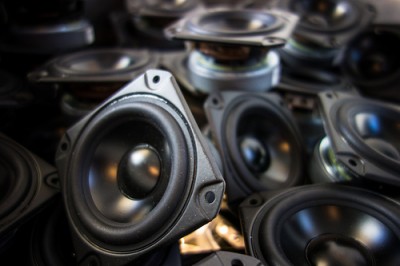
Since the advent of technology, the audio experience has continued to evolve, providing listeners with enhanced options to consuming their favorite sounds. The clarity with which sound can now be experienced can often leave you feeling like you are witnessing a live performance.
Wireless audio has improved by leaps and bounds over the past few years. No longer solely a way to transmit sound without wires, new technology allows you to link multiple audio sources in various locations, to a variety of receivers, and to decide where each signal goes.
Because of the vast amount of options available, selecting the right system for you can feel daunting.
Here are some things to look for in buying the optimal wireless audio setup. You can immediately begin to enjoy the listening experience of your dreams.
Basics
Using a radio-frequency transmitter to send an audio signal to a radio receiver is what wireless audio is at its most elementary level. This signal is sent as a radio wave and the range is dependent on the radio type (as well as barriers such as walls that can affect the transmission). It can be communicated directly from the transmitter to the receiver, or via another tool such as a router. The radio will often employ Wifi or Bluetooth technology, or a combination of these. Both the playback unit and the source must be compatible in order to communicate.
Consider Your Usage
Where are you going to use the wireless audio? Are you looking for a way to have sound available and connected in all rooms of your house? Are you seeking a speaker that you can take to the pool and/or the park? Companies specializing in this type of equipment will have products to meet your specific desires, up to and including waterproof speakers that can float next to you in the pool. Many multi-speaker systems will have a variety of compatible speakers to mix and match for customization.
Connectivity
You’ll want to determine whether your system will have WiFi, Bluetooth connectivity, or a combination. Each on their own has their advantages and disadvantages, so speakers that work with both are ideal. If you can only get one or the other, here are some tips. Bluetooth is almost universally adaptable and already on many devices you own, but it has a limited range.
WiFi typically has greater range, but the setup can be tricky and sometimes has problems with incompatibility among systems. Whichever system you choose, make sure it allows you to access your entire music library and listen to whatever you want. Also check if it works with your favorite streaming service before you buy.
Construction and Sound Quality
Speakers will often feature a speakerphone, an Aux input and a mobile device charging port. Also present will be a 3.5mm jack to hook up with a wired source. Beyond these basics, you should look for high quality construction. Does the exterior look modern and aesthetically pleasing? Does it feel solid or substantial in your hand?
Look for stability when playing bass-heavy tracks (some speakers will move to the music). If you can’t listen to the speaker pre-purchase, or if you’re not in a great environment for your test drive, read some online reviews from experts.
They can give you some tips on the best speakers for your needs. Do some thinking and some research, follow these guidelines for your shopping, and you’ll soon be experiencing high quality sound whenever and wherever you want it.
photo credit: Sonos Play:3 Speakers at the Sonos Studio via photopin (license)


